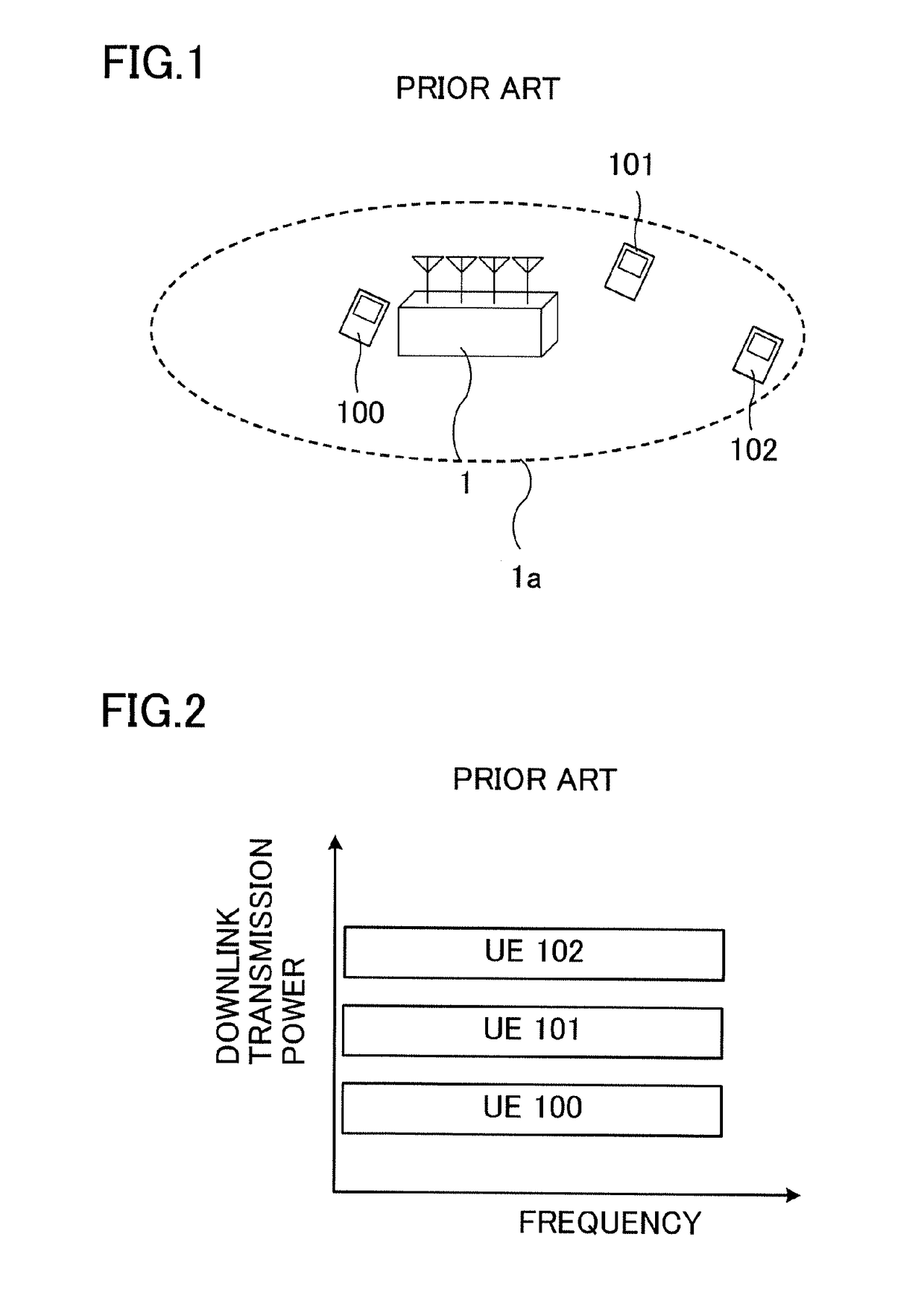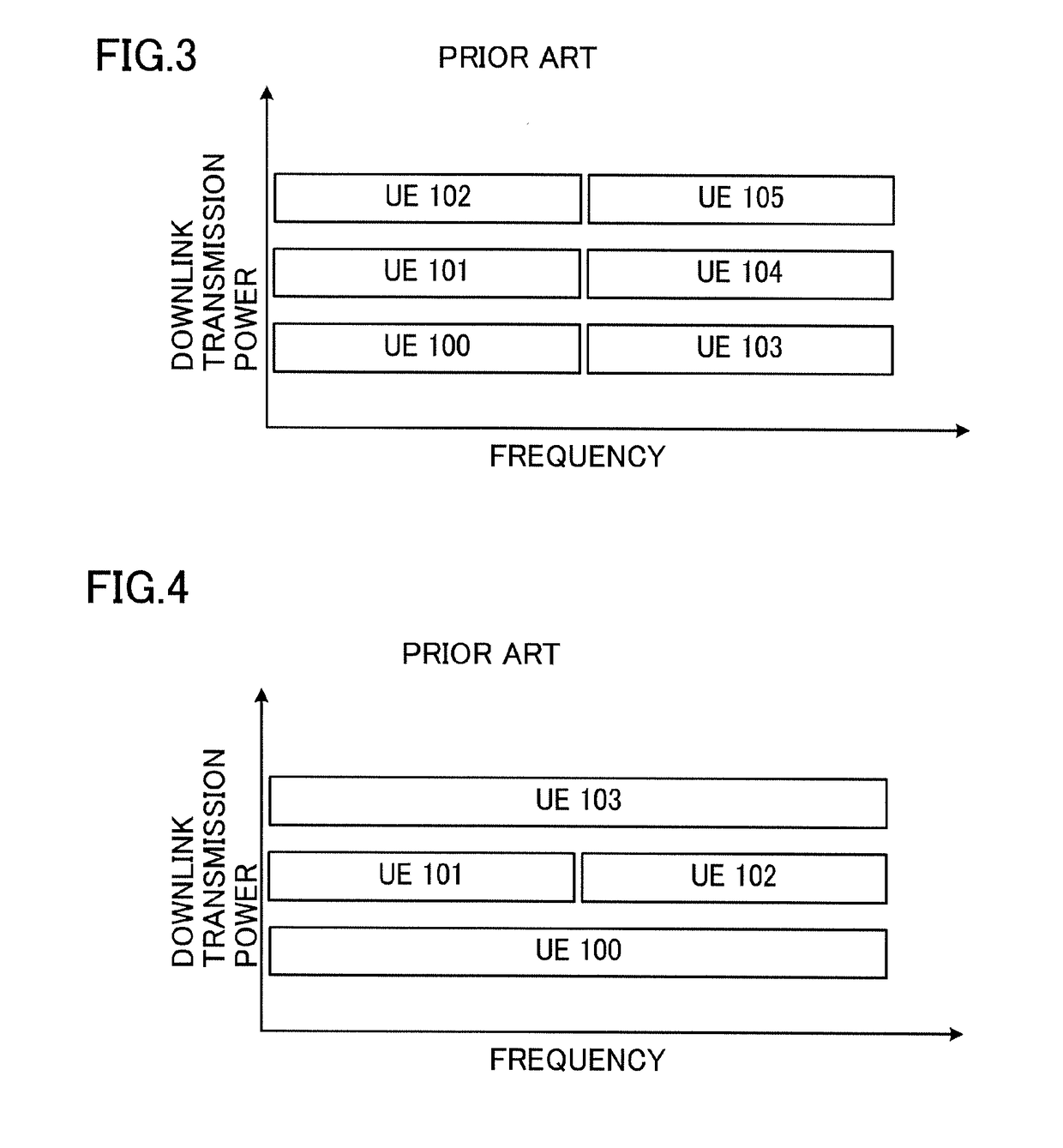Base station and user equipment
- Summary
- Abstract
- Description
- Claims
- Application Information
AI Technical Summary
Benefits of technology
Problems solved by technology
Method used
Image
Examples
first embodiment
[0050]In view of this, a base station according to the first embodiment of the present invention performs notification of identifier information indicating multiple C-RNTIs (Cell-Radio Network Temporary IDs) of all of the UEs each belonging to any one of groups to which NOMA is to be applied, to multiple UEs each belonging to any one of the groups to which NOMA is to be applied, using a period that is longer than a transmission period for the PDCCII signals. Each UE that belongs to a group and for which the downlink transmission power is not the highest can use the identifier information to descramble the PDCCH signals for the other UEs that belong to the same group as the subject UE and are the destinations of data signals with higher transmission powers than the transmission power of the data signal addressed to the subject UE. Note that C-RNTI is referred to hereinafter simply as RNTI for the sake of simplicity in the description.
[0051]A CRC (Cyclic Redundancy Check) bit that is ...
second embodiment
[0086]Next, a second embodiment of the present invention will be described. The second embodiment is an improvement on the first embodiment.
[0087]With LTE, the concept of aggregation levels is used in the transmission of PDCCH signals. FIG. 11 shows aggregation levels. A PDCCH is allocated to an REG (resource element group) other than a PCFICH (physical control format indication channel) and a PHICH (physical Hybrid-ARQ indicator channel). The concept of CCEs (Control Channel Elements) is used in the allocation of a PDCCH. One CCE is a set of nine consecutive REGs, and one REG is a set of four resource elements.
[0088]The number of CCEs to which the DCI transmitted with a PDCCH is allocated differs according to the aggregation level. The aggregation level is any one of different aggregation levels 1, 2, 4, and 8. Description will be given using eight CCEs hereinafter. With aggregation level 1, eight PDCCH signals corresponding to eight UEs are transmitted using eight CCEs. That is, o...
third embodiment
[0107]Next, a third embodiment of the present invention will be described. The third embodiment is an improvement on the first embodiment.
[0108]As described above in relation to the second embodiment, a low aggregation level is set for a UE with good downlink reception quality, and a high aggregation level is set for a UE with poor downlink reception quality. With NOMA, a low transmission power is allocated to a UE with good downlink reception quality, and that UE cancels out data signals addressed to UEs that have poor reception quality and have high transmission powers allocated thereto. Accordingly, a UE for which a high aggregation level is set is a UE that has poor downlink reception quality and has a high transmission power allocated thereto, and such a UE can decode a desired data signal (high power) without canceling out the interference data signals (low power) addressed to other UEs, even if these data signals addressed to other UEs are overlapped through NOMA on the desir...
PUM
 Login to View More
Login to View More Abstract
Description
Claims
Application Information
 Login to View More
Login to View More - R&D
- Intellectual Property
- Life Sciences
- Materials
- Tech Scout
- Unparalleled Data Quality
- Higher Quality Content
- 60% Fewer Hallucinations
Browse by: Latest US Patents, China's latest patents, Technical Efficacy Thesaurus, Application Domain, Technology Topic, Popular Technical Reports.
© 2025 PatSnap. All rights reserved.Legal|Privacy policy|Modern Slavery Act Transparency Statement|Sitemap|About US| Contact US: help@patsnap.com



